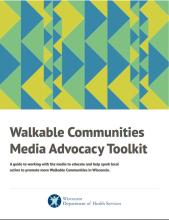Nutrition, Physical Activity, and Obesity: Active Community Initiatives
The term “active community” can apply to a number of efforts to increase physical activity. The term is used when a local area gives its members more chances for recreation. Efforts can give more ways for people to travel from their homes, work, and other places. This might include more safe places for biking or walking.
However, not all of us have the same access to safe physical activity. Not all locations are safe or easy to access. We need to shift policy and systems to support chances for physical activity. We need to build safe spaces.
We’ve put together a road map to give you examples of active community initiatives. This guide includes efforts such as:
- Safe Routes to School programs.
- Complete Streets policies.
- Joint or shared-use agreements that allow groups to share indoor and outdoor spaces for physical activity, such as gyms, athletic fields, or playgrounds.
View our Physical Activity and Nutrition Road Map, P-03170 (PDF)
More ideas and resources
Community Strategy and Resource Guide
Move Your Way
Move Your Way Community Resources
Walkable Communities Media Advocacy Toolkit
Use the Walkable Communities Media Advocacy Toolkit, P-01282 (PDF) to guide your work with media.
This toolkit will help you promote your Walkable Communities.
The kit contains a sample news release, letter to the editor, media alert, and talent release.
Modify these tools to fit your community.
Community Walking and Bicycling Audit Tool
Our Community Walking and Bicycling Audit Tool, P-00399 (PDF) outlines the benefits of walking and bicycling. Benefits include improved health, cleaner air, and more social interaction in the community. Taking an audit in your community can help identify key intersections or areas where changes could make a big difference. Physical and environmental efforts will improve people’s chances to be more active. This tool guides you on what to look for when selecting and evaluating sites.
Safe Routes to School resources
- Safe Routes to School in Wisconsin—A brief from the Childhood Obesity Intervention Cost-Effectiveness Study (CHOICES) Learning Collaborative Partnership. Safe Routes to School programs help children safely walk and bike to school by incorporating key principles: engagement, encouragement, equity, engineering, education, and evaluation.
- Fighting for Equitable Transportation: Why it Matters (PDF)—A summary from the Safe Routes to School National Partnership. Describes how active transportation infrastructure can improve health inequity.
Infographics from the Safe Routes partnership
- Federal Funding for Safe Routes to School (PDF)
- Transportation Alternatives Program: Federal Funding Flow (PDF)
Small town and rural strategies
- Promoting Active Living in Rural Communities (PDF)—Summary on research of elements of man-made structures and facilities related to obesity or physical activity. Use this research to plan your rural activities.
- Small Town and Rural Multimodal Networks (PDF)—A resource for transportation planners in small towns and rural communities. Highlighting small town and rural case studies, it applies existing national design guidelines in a rural setting.

